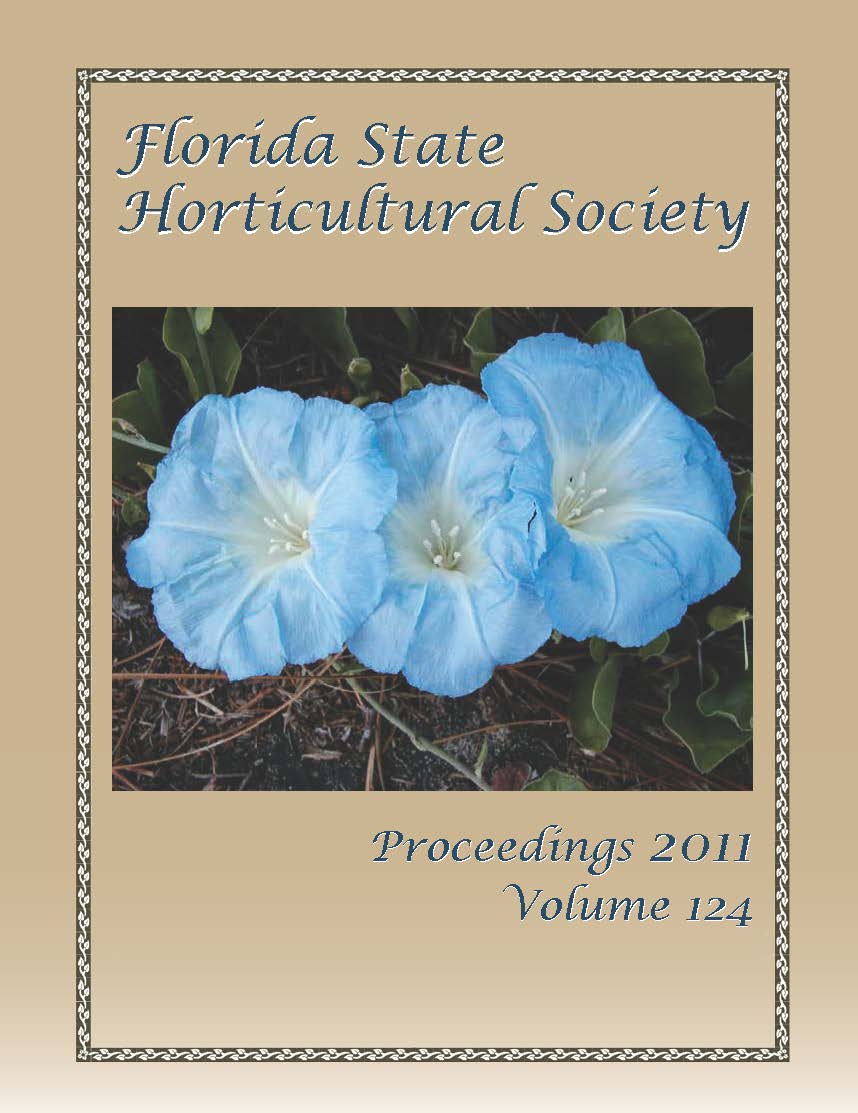Abstract
Florida ranks first nationally in the production, acreage, and total value of fresh market snap beans (Phaseolus vulgaris L.) with approximately 36% of the total U.S. market with 32,200 acres with a volume of 6,440 million bushels (30-lb bushel) at a market value of $135 million in the 2009–2010 season. High yield and deep green pod color are the main characteristics to the Florida snap bean industry. The objectives of these trials were to update the Florida snap bean varieties recommendations. Two snap bean variety trials were conducted in fall 2010 in sandy (Myakka City, FL) and muck (Belle Glade, FL) soils evaluating 13 and 11 snap bean varieties, respectively. Data collection at Myakka City consisted of total marketable and unmarketable yields, pod size, fresh pod weight, color, and soluble solids. At Belle Glade, only marketable yield and pod size were measured. Weather conditions during the trials were cold to cool with four freeze events at Myakka City and no freeze events at Belle Glade. In Myakka City, ‘Ambra’, ‘Bronco’, ‘Carlo’, ‘Dusky’, ‘Eureka’, and ‘Prevail’ had the highest yields, but not the deepest green color. At Belle Glade, ‘Bronco’, Caprice’, ‘Carlo’, ‘Eureka’, ‘Prevail’, and ‘Valentino’ had higher yields among the varieties evaluated. Based on marketable yield and color, no single variety outperformed the others in the most favorable categories.

